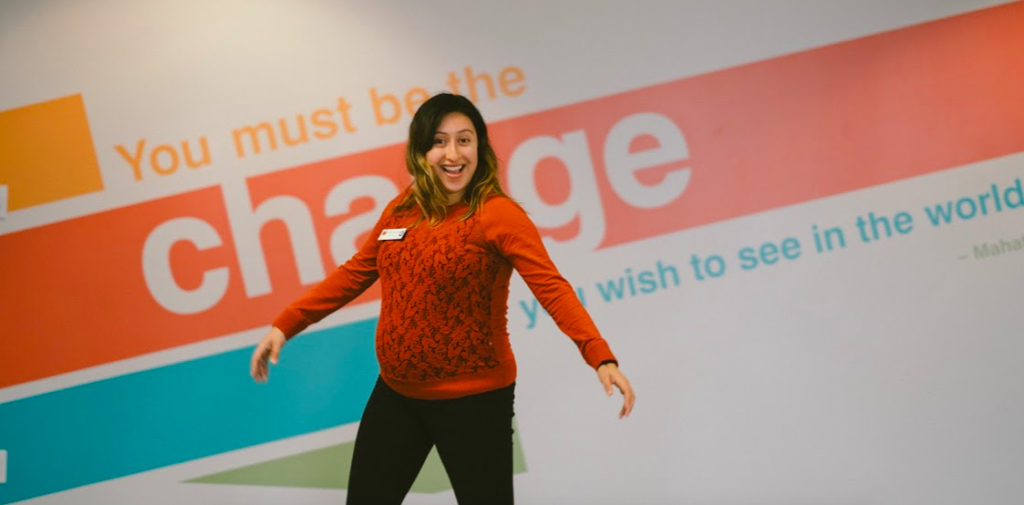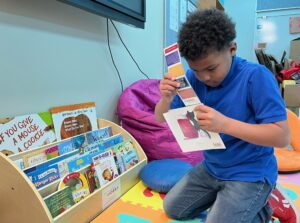City Year corps members mentor at-risk students in Tulsa
By: Andra Eger
Struggling students at two Tulsa schools are getting some extra help with their ABCs – as in attendance, behavior and course failure in reading or math.
City Year, an AmeriCorps program, has begun its first year in Tulsa with a total of 20 corps members at Kendall-Whittier Elementary School and Clinton Middle School.
“They are so upbeat, so positive. It supports the teachers and, more importantly, it supports the students,” said Kendall-Whittier Principal Ronda Kesler. “They become part of the fabric of that classroom, but they also work one-on-one with students and build relationships with the kids. In doing that, it helps increase the kids’ feeling of safety and security.”
Founded in 1988 in Boston, City Year is now in 25 cities across the U.S. City Year corps members tutor students who have been identified by school personnel as the most at-risk of dropping out of school
The program was brought to Tulsa this year as part of a new partnership called “Growing Together” to support two of the city’s neediest areas, the Kendall-Whittier area near the University of Tulsa campus and the feeder pattern of west Tulsa’s Eugene Field Elementary School.
In 2014-15, City Year will add 30 more corps members, bringing the total to 50 working in six schools in the two Growing Together neighborhoods.
Growing Together is headed up by the Community Action Project of Tulsa County but is supported by numerous local and national groups.
Local partners include the George Kaiser Family and Schusterman foundations, Tulsa Area United Way, Tulsa Public Schools and the University of Tulsa, while other new national education partners include Talent Development Secondary, Reading Partners and College Summit.
Elizabeth Byers, a 24-year-old from Wisconsin, is in her second year as a City Year corps member. She worked in Seattle last year but applied to come to Tulsa because she was drawn to the idea of helping establish a first-time program.
Byers said she took a job in a museum education program right out of college but found the work too impersonal.
“With City Year, you build relationships with your students instead of seeing them for an hour or two one time. I’m interested in working in youth development and really think nonprofit is the best fit for me,” Byers said.
Every morning, Kendall-Whittier’s dozen corps members stand outside around 7:30 a.m. and greet the entire student body with high fives and special cheers.
Eight-year-old Luis Dominguez-Lynch showed off the new dance move he learned by watching Kara Lewis, a 22 year-old, first-year corps member and recent graduate of Kansas University.
“That’s great!” Lewis said, hearing about her newest fan from other City Year staffers.
Byers marveled at the fact that after only a few weeks, students are mimicking the encouraging behavior their new mentors are showing them.
For example, as students made their way from their classrooms to get their school pictures taken, Byers and Lewis gave out more high fives, plus compliments to students in tiny neckties and princess-inspired dresses.
“It’s picture day, so they’re not wearing uniforms like they usually are,” Byers said. “It’s neat to get to see their personalities.”
City Year corps members are considered “near peers” in that they are 17-24 years old, but they receive intensive training to be full-time tutors, mentors and role models.
“The idea is that they’re old enough to be respected but young enough to relate to the students,” said Neils Ribeiro-Yeomofio, the startup director for City Year Tulsa.
Each corps member is assigned to focus on 10 to 12 students in one grade level. At Kendall-Whittier, they work with students in grades three through six and at Clinton, with seventh- and eighth-graders.
Kesler said teachers and administrators at Kendall-Whittier are still working to identify their students who most need this intense level of mentoring, and their parents will be asked to allow them to stay after school for extra tutoring.
“That is our main goal – academic assistance,” Kesler said. “They also help with lunch and playground duty, so the kiddos not only see them as an academic support but in more relaxed settings, as well. They are very much adults to the students but positive adults.”
A typical school day for a City Year corps member
7:30 a.m.: Arrive at school
8 a.m.: Greet students
8:30 a.m.: Make phone calls home to absent students
9 a.m.: One-on-one math tutoring
10 a.m.: Small group work in classrooms
Noon: Lunch and recess with students
1 p.m.: One-on-one literacy tutoring
2:30 p.m.: Staff meeting
3:30 p.m.: After-school programs and homework help
5 p.m.: Planning time
6:30 p.m.: Leave school



